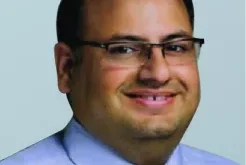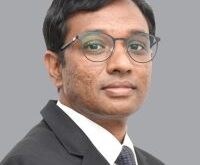Headaches amongst children is a common phenomenon, indicated by frequent complaints of pain in their heads or necks. This can be caused due to dehydration, infections such as the flu, allergies, eyesight issues, or not eating enough. Although these headaches may last a few minutes or hours, children may be unable to accurately describe the pain and are more likely to throw up, get restless, or appear pale when they have them. However, if the headache persists and the symptoms increase with time, it could be an indication of a paediatric brain tumour.
Paediatric brain tumours
Paediatric brain tumours are masses or growths of abnormal cells that occur in a child’s brain or the tissue and structures that are near it. Brain tumours in children occur due to defects in the genes that are involved in cell cycle control, resulting in uncontrolled multiplication of cells. It is most common in children between the ages of 4 and 9.
Gliomas are a frequent type of brain tumours in children that develop from glial cells, the brain’s supporting tissue. Many different types of paediatric brain tumours exist, such as Primitive neuroectodermal tumours (PNET) that can occur anywhere in a child’s brain, Medulloblastomas occurring around the midline of the cerebellum, Craniopharyngiomas or benign tumours that develop around the base of the brain and Pineal region tumours that develop around the pineal gland amongst many others. Among which, some are noncancerous (benign) and some are cancerous (malignant).
Symptoms
The signs and symptoms of a brain tumour in children vary greatly depending on the type, size, location, and rate of growth. Some signs and symptoms may be difficult to identify because they are similar to those of other conditions. Some of the common symptoms include:
● Headaches, which may grow more frequent and severe in the future
● Unexplained nausea or vomiting with a feeling of increased pressure in the head
● The sudden onset of vision issues, such as double vision
Other possible signs and symptoms depending on the location of the tumour include:
● A fuller spot on the skull of babies
● Seizures
● Abnormal eye movement
● Slurred speech
● Loss of appetite
● Trouble walking
● Weakness or drooping of one side of the face
Causes
Patients with certain specific hereditary diseases like neurofibromatosis, or retinoblastoma are more likely to develop central nervous system tumours. There are examples of children in the same family acquiring brain tumours despite the absence of any of these hereditary disorders. Some substances have the potential to alter the structure of a gene that protects the body from sickness and cancer. Researchers have been looking at the parents of children with brain tumours and their previous exposure to substances, such as pesticides and petroleum products. Children who have previously received radiation therapy to the head as part of treatment for other malignancies are also at a higher risk of developing new brain tumours.
Diagnosis
If a brain tumour is suspected in your child, a number of tests and procedures will be suggested to aid in diagnosis and help establish treatment options. These include neurological exams, imaging tests like MRI scan, biopsy, and precision medicine diagnosis.
Treatment
The first step in the treatment of brain tumours is usually surgery. The goal is to remove as much of the tumour as feasible while keeping neurological function intact.
To kill tumour cells, radiation therapy is used that employs high-energy beams such as X-rays or protons. Radiation therapy can be delivered from a machine outside the body which is called external beam radiation. Radiotherapy treatment in childhood brain tumours often involves treatment of the entire brain, spinal cord and surrounding fluids together, for which the Radixact X9 Helical Tomotherapy System available at HCG Kolkata is one of the world’s best and most accurate machines for treating such tumours. Steroids to treat or prevent swelling especially in the brain along with anti-seizure medications are also used. A ventriculoperitoneal shunt, also called VP shunt, may be placed in the head to drain the excess fluid from inside the brain to the abdomen.
It is important to monitor the neurological function of the child post-surgery and hence, regular follow-up visits to evaluate the overall health condition, side effects are crucial to safeguard the child against any possibilities of recurrence of the tumour.
Treatment for brain tumors in children are typically quite different from treatment for adult brain tumors, thereby it must be kept in mind that owing to the location of the tumour, certain types of brain tumours in children can cause long-term impairments to their cognitive and neurological functions. It is, therefore, always best to see a physician if your child shows any signs or symptoms that are a cause for worry and it’s very important to enlist the expertise and experience of paediatric specialists in neurology and cancer.
By Dr. Ayan Basu, HOD and Senior Consultant, Radiation Oncology, HCG EKO Cancer Center, Kolkata
 Newspatrolling.com News cum Content Syndication Portal Online
Newspatrolling.com News cum Content Syndication Portal Online






